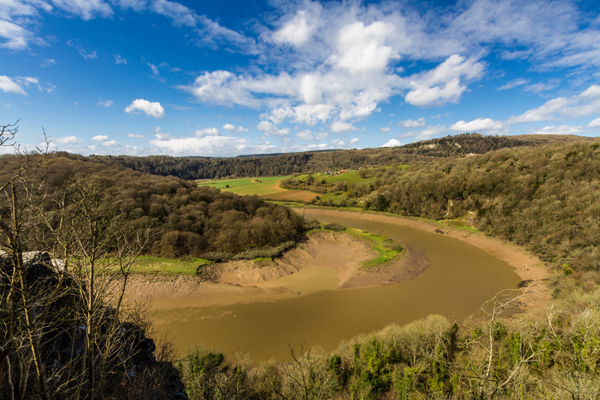Modern Slavery: alive and well in the UK
Employment law solicitor Liana Wood discusses modern slavery and what can be done about its increasing prevalence, following figures recently published by the National Crime Agency.
Posted on 15 August 2017
Speaking about the problem of modern slavery in the UK last Thursday, Will Kerr of the National Crime Agency (NCA) told a group of journalists:
“The more we look for modern slavery, the more we find evidence of the widespread abuse of the vulnerable. The growing body of evidence we are collecting points to the scale being far larger than anyone had previously thought.”
The following day, the news broke that 11 members of a Lincolnshire family had been convicted of a series of modern slavery offences after forcing at least 18 individuals, including homeless people and those with learning disabilities, to work for little or no pay and live in squalid conditions.
Apparently, the Rooney family had told their victims that they would offer them work and accommodation but once the individuals accepted, they were allocated dilapidated caravans, mostly with no heating, water or toilet facilities.
It’s clear, then, that modern slavery is far from leaving our UK shores; its prevalence, instead, seems to be ever increasing.
The Government has estimated that there are up to 13,000 people living in slavery in Britain today. Of this estimated total, far fewer are referred through the National Referral Mechanism (NRM) which was set up for this purpose. In 2016, there were 3,805 referrals made (a number which has risen from 1,745 in 2013). 2,527 of the referrals were adults and, of those, 44% were subject to labour exploitation, 38% to sexual exploitation and 13% to domestic servitude.
Unsurprisingly, there were a far greater number of females referred in relation to sexual exploitation and domestic servitude (93% and 79% respectively) and there were far more males referred in relation to labour exploitation (84%). However, the split in terms of men and women referred to the NRM is relatively even; 1,936 females and 1,864 males.
Those referred to the NRM in 2016 had also originally come from 108 different counties; the seven most common countries being Albania, Vietnam, the UK, Nigeria, China, Romania and Poland.
With incidences of labour exploitation being reported in the beauty industry, catering, agriculture and amongst cleaners, care workers and couriers to name only a few, there can be no set image of what someone who is being exploited looks like. Ethnicities, ages, nationalities and levels of education can all vary. Vulnerability, alone, remains a constant.
It’s important too that we are open about the fact that there are differing severities of exploitation. Some victims may be paid a wage, work in a customer-facing role and have at least some freedom in respect of their lives and activities. All this is possible, while they are still being paid well below the national minimum wage, working under coercion and living in fear of one form or another.
The precise reason it is important to have these discussions is so modern slavery can be tackled effectively. We might encounter victims at car washes and nail bars; victims might be delivering our pizzas or cleaning our houses.
With this in mind, Will Kerr’s comments come as the NCA launch an advertising campaign to try and raise awareness about the signs of slavery in modern day life. Some signs could be that an individual is looking distressed and unkempt with dirty or very old clothing, they might be injured, either visibly or moving in a way that indicates pain or it may be apparent that someone else is controlling them, perhaps by not allowing them to speak for themselves or visibly guiding what they say or do.
The truth is that although it’s important for members of the public to be vigilant, identifying victims is difficult and not always going to be possible.
Crucially, modern slavery, trafficking and labour exploitation cannot be isolated from each other and need to be viewed holistically. Moreover, they are firmly part of a worsening refugee crisis and a UK workforce that is becoming increasingly unregulated.
Yes, it’s helpful to hear Will Kerr talk about the scale of the problem in the UK and it’s important that prosecutions continue to be reported, but the Government will have to address these crises of modern Britain together in order to stand a hope of tackling modern slavery head on.
“The more we look for modern slavery, the more we find evidence of the widespread abuse of the vulnerable. The growing body of evidence we are collecting points to the scale being far larger than anyone had previously thought.”
The following day, the news broke that 11 members of a Lincolnshire family had been convicted of a series of modern slavery offences after forcing at least 18 individuals, including homeless people and those with learning disabilities, to work for little or no pay and live in squalid conditions.
Apparently, the Rooney family had told their victims that they would offer them work and accommodation but once the individuals accepted, they were allocated dilapidated caravans, mostly with no heating, water or toilet facilities.
It’s clear, then, that modern slavery is far from leaving our UK shores; its prevalence, instead, seems to be ever increasing.
So what counts as modern slavery?
It is often discussed in relation to sexual slavery and the exploitation of predominately young women and girls, but it’s important that discourse accounts for the diversity amongst the victims as well as the types of exploitation.The Government has estimated that there are up to 13,000 people living in slavery in Britain today. Of this estimated total, far fewer are referred through the National Referral Mechanism (NRM) which was set up for this purpose. In 2016, there were 3,805 referrals made (a number which has risen from 1,745 in 2013). 2,527 of the referrals were adults and, of those, 44% were subject to labour exploitation, 38% to sexual exploitation and 13% to domestic servitude.
Unsurprisingly, there were a far greater number of females referred in relation to sexual exploitation and domestic servitude (93% and 79% respectively) and there were far more males referred in relation to labour exploitation (84%). However, the split in terms of men and women referred to the NRM is relatively even; 1,936 females and 1,864 males.
Those referred to the NRM in 2016 had also originally come from 108 different counties; the seven most common countries being Albania, Vietnam, the UK, Nigeria, China, Romania and Poland.
With incidences of labour exploitation being reported in the beauty industry, catering, agriculture and amongst cleaners, care workers and couriers to name only a few, there can be no set image of what someone who is being exploited looks like. Ethnicities, ages, nationalities and levels of education can all vary. Vulnerability, alone, remains a constant.
It’s important too that we are open about the fact that there are differing severities of exploitation. Some victims may be paid a wage, work in a customer-facing role and have at least some freedom in respect of their lives and activities. All this is possible, while they are still being paid well below the national minimum wage, working under coercion and living in fear of one form or another.
The precise reason it is important to have these discussions is so modern slavery can be tackled effectively. We might encounter victims at car washes and nail bars; victims might be delivering our pizzas or cleaning our houses.
With this in mind, Will Kerr’s comments come as the NCA launch an advertising campaign to try and raise awareness about the signs of slavery in modern day life. Some signs could be that an individual is looking distressed and unkempt with dirty or very old clothing, they might be injured, either visibly or moving in a way that indicates pain or it may be apparent that someone else is controlling them, perhaps by not allowing them to speak for themselves or visibly guiding what they say or do.
The truth is that although it’s important for members of the public to be vigilant, identifying victims is difficult and not always going to be possible.
So what, then, can be done?
Unfortunately, substantial change will only occur at a governmental level. The introduction of the Modern Slavery Act 2015 was a step in the right direction and has focussed attention and resources on modern slavery. Arguably, however, its focus is too heavily on law enforcement and it doesn’t go far enough to protect victims, particularly domestic workers, who are still expected to challenge their abuser in order to then seek protection, which then leaves them undocumented and therefore potentially criminalised.Crucially, modern slavery, trafficking and labour exploitation cannot be isolated from each other and need to be viewed holistically. Moreover, they are firmly part of a worsening refugee crisis and a UK workforce that is becoming increasingly unregulated.
Yes, it’s helpful to hear Will Kerr talk about the scale of the problem in the UK and it’s important that prosecutions continue to be reported, but the Government will have to address these crises of modern Britain together in order to stand a hope of tackling modern slavery head on.

